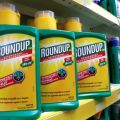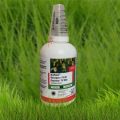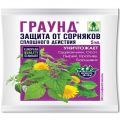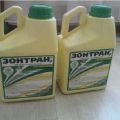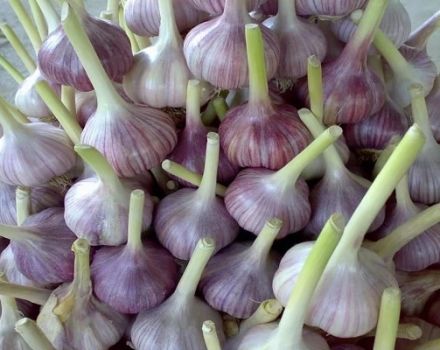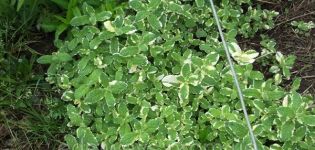Instructions for the use of the herbicide Napalm, safety measures and analogues
The use of the herbicide Napalm is quite often carried out in agriculture. This remedy has been used successfully for various types of weeds. These include sow-thistle, birch, wheatgrass and many other plants. The product helps to kill weeds. To achieve good results in this, you should strictly follow the instructions. Security measures are also important.
Content
- 1 Composition, purpose and formulation of the herbicide Napalm
- 2 How weed control works
- 3 Advantages and disadvantages
- 4 Consumption rate for different plants
- 5 Preparation of working solution
- 6 Instructions for use, dosage
- 7 Precautions
- 8 Drug toxicity
- 9 Is it compatible with other substances?
- 10 How to store the product correctly?
- 11 What are the analogues?
Composition, purpose and formulation of the herbicide Napalm
The active ingredient in napalm is glyphosate, which is a potassium salt. The tool belongs to the category of phosphoric acid derivatives. The substance is released in the form of an aqueous solution. The composition is produced in containers with a volume of 100 or 300 millimeters.
How weed control works
The tool belongs to a broad spectrum of herbicides. It is a systemic contact herbicide.
Thanks to the use of the substance, it is possible to destroy the plants on which it falls. This effect is achieved by spraying. As a result, the substance reaches the root system. After 5-10 days, the weed dies. The first signs of wilting are observed after 3-4 days.
The composition helps to cope with such weeds:
- horsetail;
- sow thistle;
- birch;
- wheatgrass;
- cereal plants.
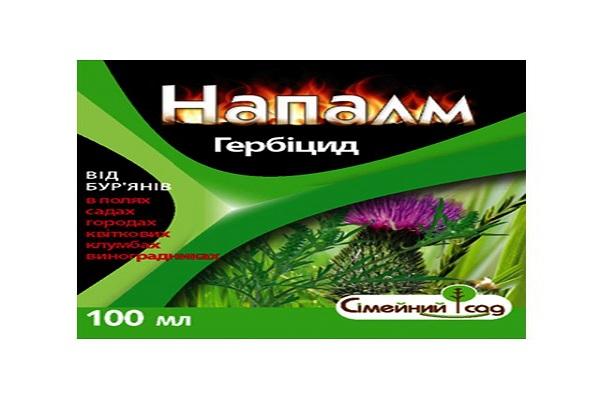
Advantages and disadvantages
The main advantages of the substance include the following:
- effective destruction of most perennial weeds;
- a wide range of dosages;
- the possibility of combining with other herbicides;
- efficiency of use in any weather;
- resistance to precipitation;
- no soil pollution;
- no risk to humans - if the instructions are followed.
The disadvantages of the herbicide include the following:
- destruction of cultivated plants upon contact with them;
- impossibility of carrying out planting works 5-6 days after processing.

Consumption rate for different plants
The consumption rate should be selected depending on the dosage of the substance. Therefore, even with a large number of weeds, it is not recommended to exceed the dosage of the agent. This will not allow you to quickly deal with weeds, but it will harm your health.
To prepare a working solution, it is worth considering the type of crops on the site:
- Potatoes. For all types of weeds, it is worth taking a solution that includes 80-120 milliliters of the product and 10 liters of water. It is recommended to process the beds a week before planting or immediately after it.This is done before the sprouts of the cultivated plant appear.
- Vegetables, melons and gourds, flowers. The dosage of the working solution depends on the weeds. If the beds are covered with annual grains or dicotyledonous weeds, 80 milliliters of the product is taken for 10 liters of water. If the area is covered with perennial grass, a more concentrated solution will be required - 120 milliliters per 10 liters of water.
- Vineyards, bushes, fruit plants. It is recommended to spray them en masse. To do this, take 4 liters of Napalm per 100 liters of water.
To treat areas not for planting, it is worth making a solution of 80-120 milliliters of the drug and 100 liters of water. This concentration is used regardless of the type of weed.

Preparation of working solution
For the herbicide to work, it is important to make the right working solution. For proper mixing of the liquid, you should use the following recommendations:
- Disposable gloves should be worn before opening the chemical package. This helps protect the skin from poisonous agents that can cause irritation.
- Read the instructions and dosage carefully. At the same time, it is important to make the amount of solution required to process the site. The finished product is not subject to long-term storage. It loses its properties and poses a danger to animals and birds.
- It is recommended to prepare the substance in a separate room. This should be done outside the reach of animals and children.
- Soft water is suitable for preparing the substance. It is best to take settled or rainwater.
Depending on the type of crop and the required dosage, it is worth mixing the required amount of herbicide with water and pouring the solution into a sprayer.
Processing can begin immediately.

Instructions for use, dosage
To spray weeds, you should focus on their variety:
- For annuals, use 40 milliliters of herbicide per 5-8 liters of water. This amount is enough for 1 hundred square meters of landings. Spraying vegetative weeds should be in the spring. It is recommended to do this 2 weeks before planting cultivated plants.
- For perennial crops, use 80 milliliters of Napalm per 5-8 liters of water. This amount will be enough to process 1 weave of beds. Spraying vegetative weeds should be in the spring. This is done 2 weeks before planting cultivated plants.
Precautions
Napalm is a moderately toxic agent. It belongs to the third class of chemicals. Despite the relative safety of the substance, it is necessary to use personal protective equipment.

It should be borne in mind that contact of the substance on the skin or mucous membranes leads to severe irritation. Therefore, when making a working solution or spraying, it is worth using gloves and protective clothing.
During processing, you should wear tight shoes and a mask. The use of glasses and headgear is also important. This will help avoid getting the composition on the skin and mucous membranes.
Do not drink, eat or smoke while spraying. This will provoke the product to enter the body. Immediately after spraying the beds, you should take a shower and change your clothes.
It is also important to rinse the mouth and wash hands and face with soap.
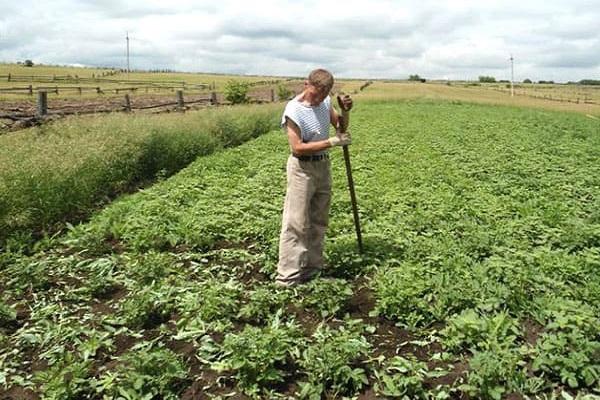
Drug toxicity
The manufacturer notes that Napalm is a drug that is harmless to humans and the environment. The composition belongs to the third class of toxicity. This means that it is considered moderately hazardous.
Is it compatible with other substances?
In tank mixtures, it is permissible to combine the agent with salts and esters of 2,4-D, MCPA. It can be used with other herbicides. Before using the product, it must be checked for compatibility with other substances.
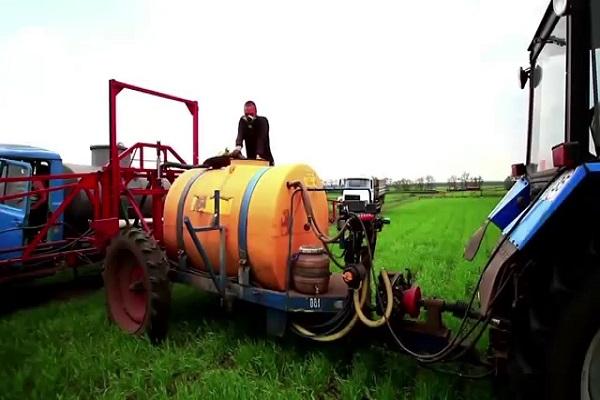
How to store the product correctly?
It is recommended to store the composition in a dry room at temperatures from -15 to +30 degrees.
What are the analogues?
The analogs of Napalm include the following funds:
- Glyfovite;
- Glyfogan;
- Roundup;
- Otaman;
- Glyphat.
Napalm is considered an effective herbicide that can help control many weeds. To achieve success in using the substance, you should strictly follow the instructions.



